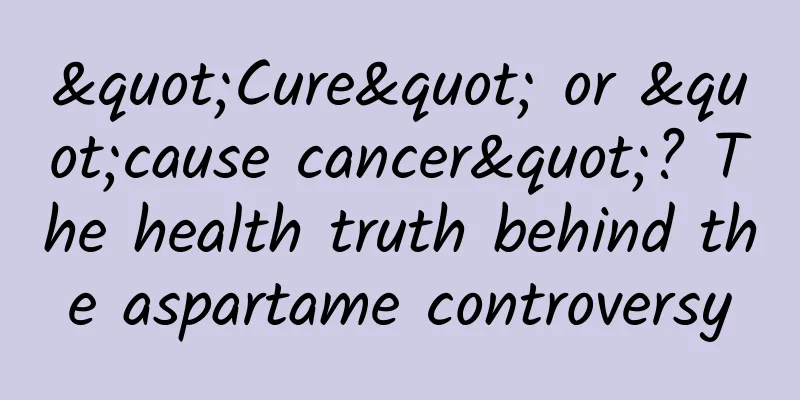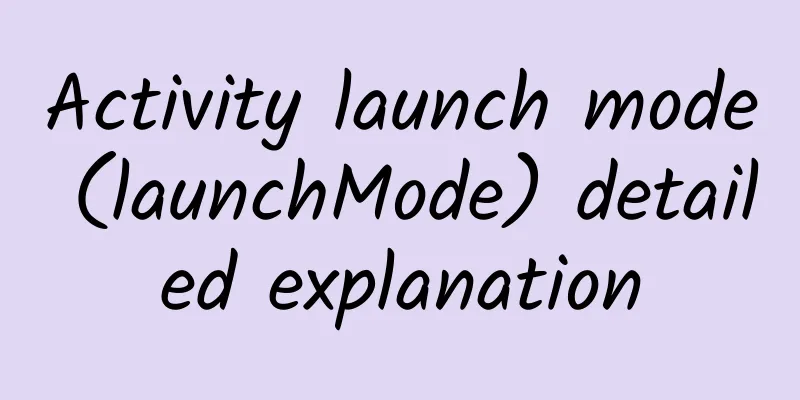"Cure" or "cause cancer"? The health truth behind the aspartame controversy

|
According to Reuters, the artificial sweetener aspartame will be declared a "possible carcinogen" by the International Agency for Research on Cancer (IARC) under the World Health Organization . After the news was released, it quickly caused a great sensation on the Internet. Some sweet drink manufacturers quickly came forward to distance themselves from aspartame and clarified that aspartame was not added to their products. Can we still drink the sugar-free beverages that are loved by many people? What else can we eat to reduce sugar in a healthy way? (Copyrighted image from the gallery, no permission to reprint) 01. Does aspartame really cause cancer? IARC classifies carcinogens into several levels: Class 1 carcinogens (clearly carcinogenic to humans); Class 2A carcinogens (there is evidence of carcinogenicity in animal experiments); Class 2B carcinogens (have a certain carcinogenic potential); Class 3 carcinogens (insufficient evidence of carcinogenicity). The aspartame in this incident will be classified as Class 2B. There is no need to panic about the fact that aspartame may be classified as a Class 2B carcinogen by IARC. We should look at it rationally. Carcinogenesis is a matter of probability. After all, alcoholic beverages and betel nuts have long been classified as Class 1 carcinogens by IARC. Many people still drink alcohol and eat betel nuts. Even the pork, beef and mutton we eat daily are classified as Class 2A carcinogens. As long as we eat them in moderation according to the dietary guidelines, there will be no problem . It is unscientific to talk about toxicity without referring to dosage. Although mainstream research results have proven that aspartame is safe since its discovery, including the United States, the European Union, the United Nations Food and Agriculture Organization, and the World Health Organization Joint Expert Committee on Food Additives (JECFA) have conducted safety assessments, this does not mean that aspartame can be consumed arbitrarily. The maximum daily intake (ADI) given by JECFA is 40mg/kg. The agency believes that an adult weighing 60kg will be at risk of damaging health if he drinks 12-36 bottles of sugar-free drinks a day. It is difficult for a person to drink so many drinks a day. In addition, the additive use standard also has specific regulations on the categories and maximum usage of aspartame. In other words, the normal consumption of qualified products containing aspartame is safe. 02. What else can you eat to reduce sugar intake? Many people know that excessive sugar intake increases the risk of chronic diseases such as obesity, tooth decay, and type 2 diabetes, which is not good for health, so reducing sugar intake has become a consensus on healthy eating. But it is human nature to love sweetness. Without sweetness, many people feel that life is tasteless. This is determined by human genes. Scientists have proved through experiments that newborn babies will be happy if they are fed sweet food, but will show a painful expression if they are fed bitter food. This is also the internal driving force behind the global popularity of sweeteners after people realized the harm of consuming a lot of sugar. (1) Develop healthy eating habits from an early age From the moment you start adding complementary foods to your baby, you need to develop a habit of light eating. Complementary foods should be prepared individually for your baby, without adding sugar or much salt, so that your baby can accept the original taste of natural food and develop a habit of light eating from an early age. Many parents are accustomed to adding fruits first when adding complementary foods to their babies. It is human nature to like sweet food. Once the baby accepts the sweetness of fruit, it will be difficult for the baby to accept it when adding vegetable complementary foods. It is easy for the baby to become picky and partial in eating. The correct way is to add vegetables first and then fruits. (Copyrighted image from the gallery, no permission to reprint) (2) Boiled water is the best drink Although artificial sweeteners such as acesulfame, aspartame, and saccharin have no problems after safety assessment, the cumulative effect of long-term and large-scale intake of artificial sweeteners is definitely not good for health. You should try to choose boiled water and light tea, and drink less sweetened beverages. However, if you really like sweet drinks, you can choose healthier products with added natural sweeteners, such as monk fruit sugar, stevia, erythritol, xylitol, and sorbitol . This requires consumers to learn to read the ingredient list. (3) Fresh juice is not as healthy as imagined Many people think that fresh fruit juice is healthy, but this is actually a misunderstanding. First, after the juice is squeezed, a large amount of functional substances such as vitamin C and anthocyanins will be oxidized and lost, and dietary fiber will also be lost during filtration; secondly, it is easy to consume more sugar. For many people, it is difficult to eat an apple, but it is easy to drink an apple juice after squeezing it, which means more sugar intake. Therefore, try not to drink fruit juice if you can eat fresh fruit. (4) The more you eat these snacks, the healthier you will be Plain yogurt, cheese and other dairy products, plain nuts, fresh fruits, low-sugar dried vegetables, low-salt beef jerky, etc. are all relatively healthy snacks that can be eaten between meals. Try to eat less cakes and desserts, puffed foods, fried, baked foods, pickled, smoked and other processed meat products , as these high-sugar, high-oil and high-salt foods are high in calories and low in nutrient density, which is not good for your health. (Copyrighted image from the gallery, no permission to reprint) (5) Diverse food and reasonable combination are the most reliable "Diverse food, reasonable combination" is the most important dietary rule. To achieve a variety of food, remember 12 kinds of food a day, 25 kinds of food a week, and a combination of coarse and fine, meat and vegetables, dark and light. Dark-colored fruits and vegetables are rich in anthocyanins, flavonoids and other phytochemicals, which are good for health and should account for more than half of the total vegetable intake. To achieve a reasonable combination, remember the food pyramid, which must include the four major categories of food: cereals and potatoes, vegetables and fruits, fish, poultry, lean meat, milk and soy products. Some people diet excessively to lose weight, eating less food and fewer types of food, which can cause malnutrition over time and make weight loss rebound easily. Some people don't eat staple foods to lose weight, which is also not good for health. Carbon water is the cleanest source of energy. Glucose is the main substance for brain energy supply. Not eating staple food for a long time will cause hypoglycemia and damage the brain. Excessive consumption of protein and fat for energy will produce sulfur-containing and nitrogen-containing compounds, which will also increase the burden on the liver and kidneys. Staple food is not the culprit for our weight gain. Low-quality carbon water such as refined white rice and flour, sweets, etc. are the culprit. We should increase the intake of whole grains and beans such as oats and buckwheat, which is not only conducive to weight control, but also better control of blood sugar. In addition, the content of various minerals and vitamins in whole grains is richer. (Copyrighted image from the gallery, no permission to reprint) 03. Aspartame controversy: the best is yet to come The assessment results to be released by IARC have caused considerable controversy in the industry. The International Beverage Association issued an official statement saying that public health authorities should be wary of this view because it contradicts decades of high-quality scientific evidence. Conclusions drawn based on low-quality scientific research may mislead consumers to consume more sugar. It should be noted that IARC is not an organization that conducts food safety risk assessment based on actual consumption. What they do is to identify risks based on the research conclusions of scholars, that is, to screen out which substances may have carcinogenic risks. Because the evaluation results have not been officially announced, it is not clear what research evidence and argumentation logic IARC used to conclude that aspartame may be carcinogenic, but it is foreseeable that IARC should use correlation evidence rather than causal evidence. The credibility of correlation evidence will be greatly reduced. Whether it is a false correlation or whether confounding factors have been excluded, these all require a lot of work. As a professional organization that assesses the risk of food additive exposure (that is, assessing how much of this substance our body consumes before the risk of cancer increases significantly), JECFA recently announced that it will conduct further risk assessment on aspartame. According to the WHO plan, the results of these two assessments will be released simultaneously by IARC and JECFA on July 14, so let us wait and see. Author: Wang Guoyi, Postdoctoral Fellow in Nutrition and Food Safety at China Agricultural University, Chairman of the Senior Food and Health Committee of Beijing Food Society Produced by: Science Popularization China Produced by: China Science and Technology Press Co., Ltd., China Science and Technology Publishing House (Beijing) Digital Media Co., Ltd. |
>>: Summer is coming! Remember to bring this "playmate" →
Recommend
2B operation: How to reach target users?
I haven’t posted an article for a long time. As a...
Operation-driven: Only those who understand the true meaning of "operation" can be considered as real Internet people
Because of my work, I have been responsible for t...
Rumor has it that Google has another personnel change: Are Android and Chrome really going to merge?
[[121331]] According to foreign media reports, pe...
Does a moving hairline mean hair loss? Don’t panic, real hair loss has these characteristics...
Author: Tang Jiaoqing, attending physician of der...
Hankook's senior management reshuffles to place more emphasis on China
Hankook Tire and its holding company Hana Tire Wo...
Long-distance running can easily lead to sudden death? The truth is...
Rumor: "Long-distance running can lead to su...
Microsoft admits failure in mobile phone business and removes "Nokia tumor"
[[139618]] After continuing to invest resources i...
From fragments to completeness, through it you can actually see the scenes from thousands of years ago?
In the process of human civilization, the emergen...
How to choose Wenchang Tower?
1. First of all, the jade Wenchang Tower has the ...
Mango TV officially starts its VR journey with Super Girl
Nowadays, it is no longer a new thing for an Inte...
Can the magical "retinal chip" help the blind regain their sight?
Vision is an important way for people to obtain i...
Breakdancing is included in the Paris Olympics? Do you want to dance?
Speaking of breakdancing What can you think of? B...
How many days will it take for something to happen if you sleep less than 6 hours a day?
【Written at the end】 If you sleep less than 6 hou...
Google is uploading Android 10 source code to the AOSP Android open source project
September 4 news Earlier today, Google began rele...
A female national security police officer captured a spy who had been lurking for 10 years! Details revealed for the first time
Hear in silence, see in formlessness The turbulen...









